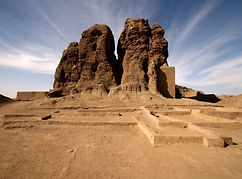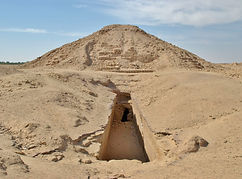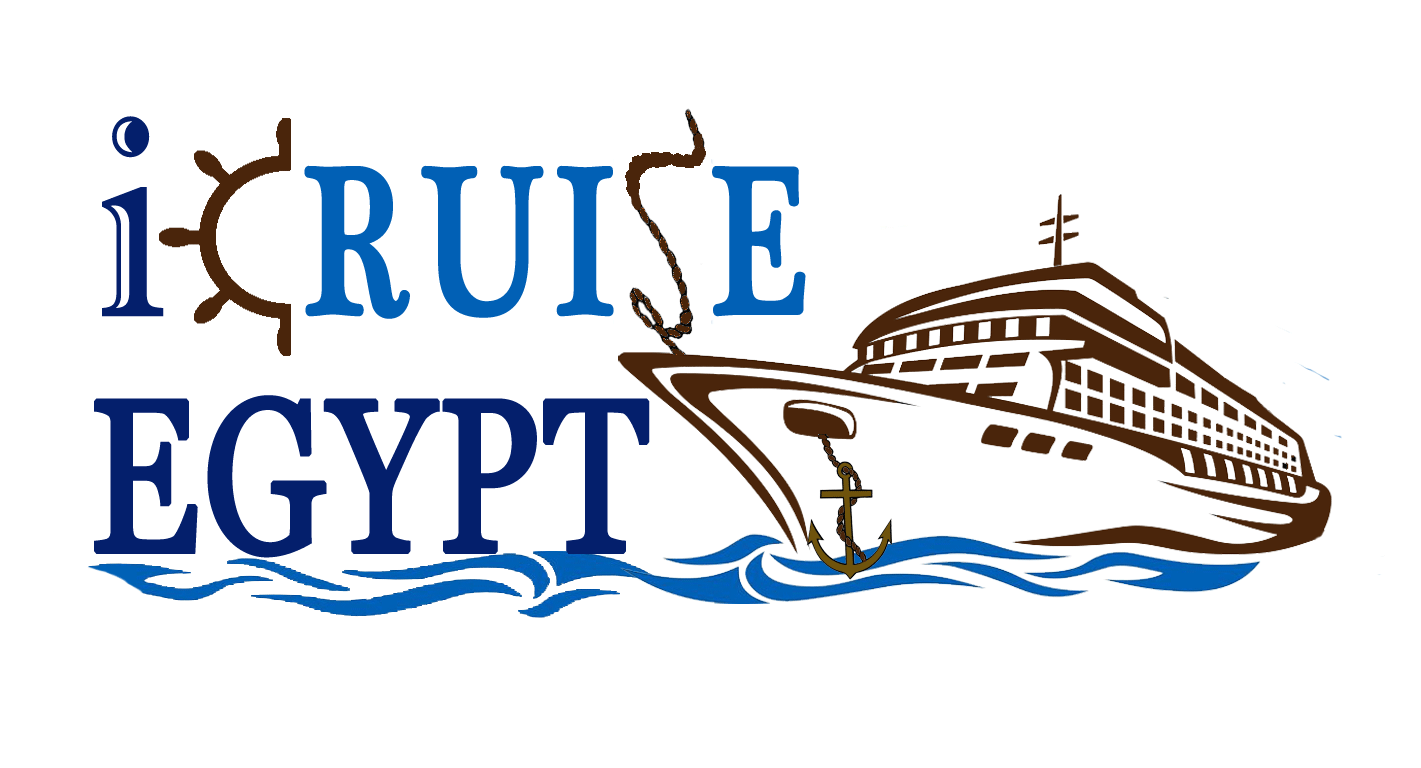February 01:- Khartoum – Dervishes Ceremony
Breakfast at the hotel. Take a pleasant cruise on the Nile of about 1h30 to see the confluence between the Blue and the White Nile.
Before sunset time we move near the tomb of the Sufi Leader Ahmed Al Nil to attend the invovling Dervishes Ceremony (Only on Fridays). Return to the hotel for overnight stay. (B.D). Dinner at Al-Mugran Restaurant " International Kitchen - Buffet"
Led By:
Egyptologist Director of The Ancient Egyptian Heritage & Archaeology Fund.
Author of Ancient Nubia, African Kingdoms on the Nile.
Bio for Dr. Peter Lacovara by Emory University
Ancient Nubia: African Kingdoms on The Nile



Northern Sudan Tour
"January 31 - February 11, 2019"
January 31:- Khartoum Arrival
Arrival at Khartoum Airport. Meet and greet with the guide and transfer to the hotel. Check in, overnight stay, dinner NOT included, transfers included.
February 03:- Khartoum - Old Dongola - Karima:
This morning we start early to drive north cross the Western desert on a good tar road till we reach the Nile that we cross on Ed Debba. n the road along the Nile to visit the site the site of Old Dongola – The old Christian capital of the Makuria Kingdom. After the visit we cross the Nubian Desert to reach the town of Karima late in the afternoon.
Overnight at the Karima Nubian Rest House. (B.L.D)

Corinthia Hotel, Khartoum
Used for First stay and Second stay in Khartoum
This ultra-modern, egg-shaped 18-story hotel of glass and steel is set at the meeting point of the Blue Nile and White Nile in the center of Khartoum’s commercial district. The views are amazing, especially from the 16th floor restaurant, and guest rooms are very spacious. The hotel has a courteous and hospitable English-speaking staff, several restaurants, and an indoor pool linked to a spa (hamam, steam bath, sauna).
February 11:- Departure
Transfer and boarding the international flight by private
vehicle.
B=Breakfast – L=Lunch – D=Dinner





February 02:- Khartoum – City Tour and Nuba Wrestling
After Breakfast we start city tour, We first visit the National Museum that, besides many beautiful objects, contains two beautiful temples rescued by UNESCO and moved from the Lake Nasser area when it was flooded by the water.
We then cross the confluence between the Blue and the White Nile near the Presidential Palace where in 1885 General Gordon was beheaded by the Mahdi's troops and we reach Omdurman, the Old Capital of Sudan, where we see the Mahdi's Tomb (only from the outside) and we visit the interesting Khalifa’s House which holds a small museum about the Mahdyia. we then visit the Souk of Omdurman. At sunset time we move to Khartoum North to assist at the traditional Nuba Wrestling (Only Fridays, Sat and Wed). Return to the hotel for overnight stay. (B.L).
February 04:- Karima - Dongola - Soleb - Tombos:
Today we drive west through the Nubian Desert. We reach the Nile and we cross the Nile on the Dongola Bridge, we continue north to the amazing Temple of Soleb, the most beautiful Egyptian temple of all Sudan, testimony of the New Kingdom in Nubia, with many walls rich in hieroglyphic inscriptions, bas-relief figures and many columns . We enjoy our lunch in a local Nubian house nearby.
February 05:- Tombos - 3rd cataract - Wadi Sebu – Sai lsland - Tombos:
We drive north on the eastern side and we visit the Third Cataract which used to be the third huge obstacle that the ancients Egyptians had to face when trying to sail on the Nile River. We walk up the hill to the ancient Ottoman Fort where we can have beautiful views of the cataract. In Sebu, right on the river bank of the Nile it is possible to visit one of the richest sites of rock engraving of all Sudan with hundreds of images from prehistoric to Egyptian times. We drive further north to reach the Island of Sai that we reach with a Ferry boat. This is an important archaeological area where we can find ancient remains from Kerma civilization, Egyptian and Christian culture. The return Nile crossing will be on a fisherman boat, during the navigation to the island we may hope to see Nile crocodiles on the shore o f the river.
Overnight at Preset camp in Tombos. (B.L.D)
February 06:- Tombos - Kerma - Western Defuffa - Karima:
A short drive this morning takes us to Kerma where we visit the majestic “Defuffa ” the monument that characterizes Kerma civilization. Very interesting is the Museum created by the Swiss archaeological mission after the recovery of seven statues of the Black Pharaohs in 2003. In the early afternoon we return to Karima. Overnight at the Karima Nubian Rest House. (B.L.D)
February 07:- Karima - Jebel Barka land the necropolis of El Kurru - Karima:
Landmark in the Nubian Desert, Jebel Barkal “Jebel” Means Mountain in Arabic can be seen from a few dozen kilometers whilst still in the open desert. At the foot of this wonderful and isolated red sandstone mountain, considered holy since the ancient times, there is a big temple, dedicated to the Pharaohs of the New Reign and to their patron, Amon. Amon's ancient "Pure Mountain", the Olympus of the Nubians, was the religious Nubian
February 08:- Karima - Nuri - Bayuda Desert - Meroe:
Not far from the Rest-House we cross the Nile to briefly visit the archaeological site of Nuri where we can see many pyramids among which there is also the one of the great Taharqa. Little walk and then we enter the Bayuda Desert. This desert is an area Bounded by the loop that the Nile forms between the 4th and the 6th Cataract and characterized by sharp black basalt mountains, most of them volcanic and typically cone-shaped. They alternate with level
February 09:- Meroe Lodge - Royal Necropolis of Meroe - Royal City - Meroe Lodge:
Royal necropolis of Meroe is located at about 3 km from the Nile on The some hills covered by yellow sand dunes. Several pyramids stand out with their sharp shapes against the clear sky. Each one has its own funerary chapel with the walls fully decorated with bas-reliefs that show the King’s life and offers to the gods. Optional Lunch at the Meroe Camp. Then we move along the Nile to visit the ruins of the royal
February 10:- Meroe Lodge - Mussawarat Es Sufra - Naga Khartoum:
After a nearly breakfast in camp we visit the Royal Necropolis of Meroe which is located about 3 km from the Nile on some hills covered by yellow sand dunes. Several pyramids stand out with their sharp shapes against the clear sky. Each one has its own funerary chapel with the walls fully decorated with bas-reliefs that show the King’s life and offers to the gods. We then begin the journey southward. The site

THE MEROE CAMP
Meroe tented Camp is located in Bagarwyia, (about 230 km. north of Khartoum) overlooking the beautiful pyramids of Meroe. Accommodation consists of 22 twin-bedded tents (4x4 m), tastefully furnished. Each one has its own private bathroom hut with shower and toilet. The Camp is located 2 km from the Royal Necropolis. Each tent is equipped with a veranda with two comfortable chairs to relax in front of the astonishing view of more than forty pyramids. The tents have electricity produced by a generator working till 11:00 pm. A restaurant building is available for the guests. The Camp is managed by an Italian manager with the help of well-trained Sudanese staff. With this permanent facility, this arid region of extraordinary archaeological interest and beautiful landscapes become accessible.





After the visit we drive off road to reach the Nile and cross it to the East coast, a short drive south will take us to Tombos – Here there were the ancient granite quarries with the remains of a statue o f the King Taharqa , simply left there in the desert about 2800 years ago and some interesting Egyptian stele engraved on the rocks.
We reach our exclusive preset camp located a mongst boulders and sand. (B.L.D)


THE NUBIAN REST- HOUSE IN KARIMA
The Nubian House is a charming small hotel built in the typical Nubian style just at the foot of Jebel Barkal, the holy mountain of the old Egyptian and Nubian Pharaohs. It is surrounded by a large private enclosure, with a nice garden and leisure area. Each of the 22 A-C rooms is characterized by a peculiar Nubian door and has its own private bathroom and a pleasant veranda. The decor and finishing have been carefully selected. They come mainly from Italy and provide an elegant yet rustic charm. A reception, a restaurant and a living room with decorated walls complete the wonderful setting. All the buildings are made with local bricks covered by hand-spread clay plaster as used in the Nubian area. The hotel is managed by an Italian manager with the help of well-trained Sudanese staff.



Meroitic period, had a large number of pyramids, located in three different places: few hundred meters north of Jebel Barkal; a dozen kilometers southwards from the holy mountain, in El Kurru; in Nuri, which is located on the other bank of the Nile. Optional lunch in the Nubian Rest House. We then move southwards to the village of El Kurru where there is one of the necropolises of the ancient capital,
heart for more than 1000 years . Besides the ruins of the big temple there are still several sculptured granite rams that were supposed to border a long a venue that probably led to the pier on the Nile. In the mountain wall there is a big room decorated with bas-relief . The Jebel Barkal archaeological sites are on the World Heritage list. The Royal necropolis of the ancient city of Napata, the Nubian capital (from 800 to 400 B.C.) before the
Napata . Here we can visit one of the two tombs, which are excavated in the rock under pyramids - partially collapsed - and are totally decorated with images of the Pharaoh, of the gods and multi-colour hieroglyphic inscriptions. Not far from here there is an interesting site of petrified wood, an ancient forest with hundreds of huge trunks. Late in the afternoon, return to Karima, accommodation at the Rest-House, dinner and overnight stay. (B.D)

pebble stretches and large valleys crossed by dry wadis, where little vegetation can be seen. It is very likely to meet isolated groups of Bisharin nomads, who live in familiar groups in small huts made of intertwined branches close to the rare water wells, with their caravan sand herds of camels and donkeys. After a picnic in the desert, we continue traveling until we reach the town of Atara, located on the confluence between the Nile
and the Atbara River. Here we cross the Nile for the last time. All of a sudden, we can glance at more than 40 pyramids, located on top of a hill, some of them perfectly preserved that belong to the Royal Necropolis of Meroe. Arrival at the permanent tented camp of Meroe, with a beautiful view on to the pyramids. Accommodation in comfortable and fully furnished tents, dinner and overnight stay. Overnight at Meroe Camp. (B.L.D).

city.The excavations confirm that the town of Meroe used to cover a large area and the royal city was located in a central position, surrounded by suburb sand a boundary wall. Most of the area where the city is located, formed by many small hills covered by red clay fragments, has still to be excavated by the archaeologists. Return to the Tented Camp of Meroe dinner and overnight stay (B.L.D)


can notice Egyptian, Roman and Greek styles, all at the same time. Not far away we reach another temple dedicated to Amon with many statues of rams and beautiful gates decorated with bas-reliefs.
In the evening we reach Khartoum. Drop off at your hotel. (B.L.D)
of Mussawarat is located in a beautiful valley crowned by hills. Here the ruins of a very big temple a revisable; it once played an exceptional important role. Its main characteristic, the “Great Enclosure” is made by many constructions and boundary walls which surround a temple built in the 1 st century A.D. We then go to Naga which is one of the two centres
that developed during the Meroitic period. In Naga, in atypical Saharan environment with rocks and sand, we find a temple dedicated to Apedemak (1st century A.D.): a wonderful building with bas-relief decorations depicting the god with a lion’s head, the Pharaoh, noblemen and several ritual images. A few metres away there is a small and odd construction with arches and columns, named"kiosk", in which we








